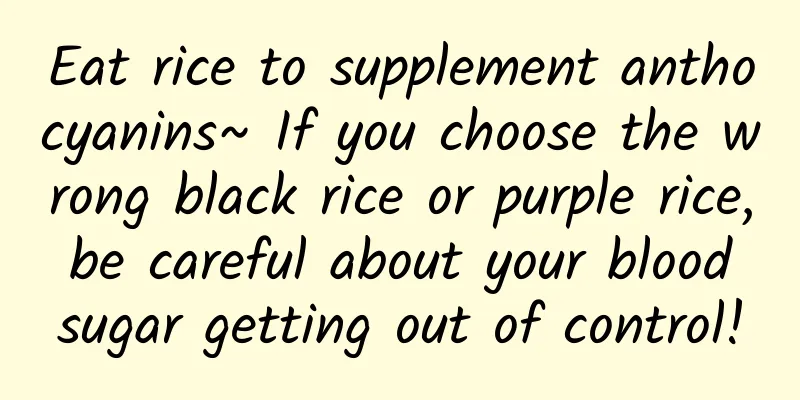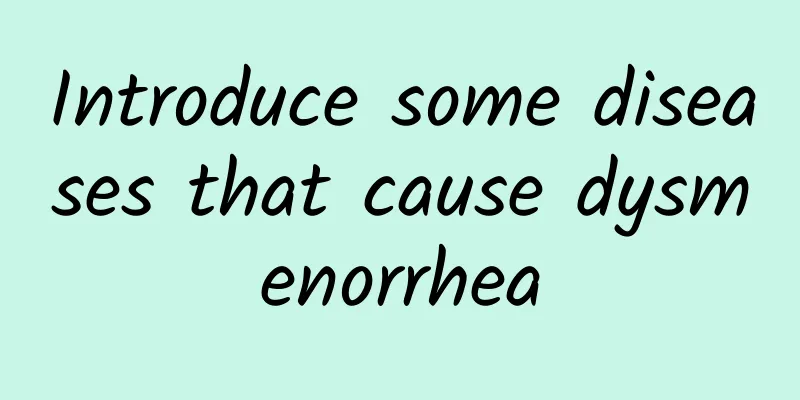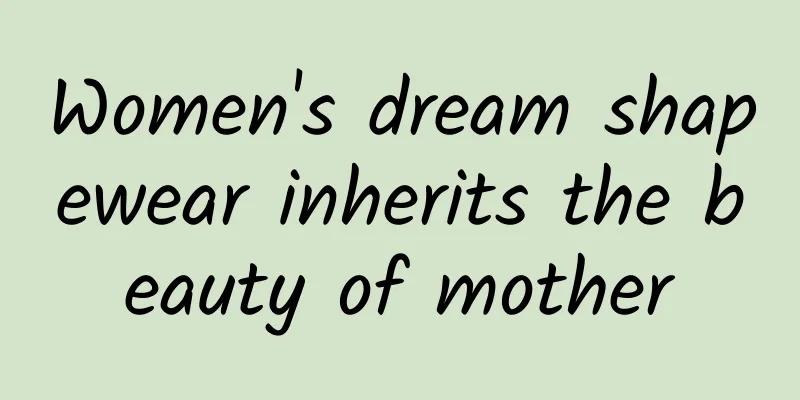Eat rice to supplement anthocyanins~ If you choose the wrong black rice or purple rice, be careful about your blood sugar getting out of control!

|
Anthocyanin diet is becoming popular, but are we only able to consume anthocyanins from fruits such as blueberries, grapes and mulberries? Of course not! Nutritionists say that purple rice and black rice are also rich in anthocyanins, which have anti-inflammatory, antioxidant and cancer prevention effects, but the two are similar in appearance. If you eat purple rice as black rice for a long time, your blood sugar may get out of control and cause obesity. Be careful! Why is anthocyanin so popular? Zhou Ning, a nutritionist at Daqian General Hospital, said that anthocyanin is a phytochemical with antioxidant effects that can help remove toxic chemicals and free radicals from the body; it has strong anti-inflammatory ability and can inhibit the synthesis of prostaglandins, thereby slowing down the inflammatory response; it can reduce the proliferation of cancer cells, inhibit the formation of tumors, prevent the spread of cancer cells and induce apoptosis of tumor cells; it can promote blood circulation, enhance the elasticity of collagen fibers in the blood vessel walls, make blood vessels strong, and thus prevent cardiovascular disease. In addition, animal experiments have also shown that anthocyanins can inhibit the rise of blood sugar and increase the secretion of insulin by the pancreas. To supplement anthocyanins, there are tips for choosing rice! How to supplement anthocyanins? Most people would think of purple fruits and vegetables, such as blueberries, mulberries, grapes, purple cabbage or purple onions, but forget that "rice" can also be a good source of anthocyanins. The secret lies in "purple rice" and "black rice"! However, many people think that black rice and purple rice are the same type of rice. In fact, this is not the case. If you value your health, don’t eat the wrong ones! Black rice and purple rice look similar, making it difficult for ordinary people to distinguish them. Black rice vs purple rice Nutritionist Zhou Ning explained that black rice and purple rice are both "brown rice". In addition to being rich in anthocyanins, they also contain dietary fiber, B vitamins and various trace elements, which have many benefits to human health. Moreover, unlike the rice that most people eat every day (which is "stalk rice", also known as "Penglai rice"), purple rice is a glutinous rice and black rice is a long-grained rice. They each have their own unique features in terms of structure, taste, cooking techniques and health benefits. Purple rice contains a lot of amylopectin and is a high GI food. Be careful not to eat too much as it can cause your blood sugar to rise rapidly. It should be noted that modern people pay attention to health preservation and like to mix white rice with purple rice to cook them together. But in fact, purple rice has a higher content of amylopectin and is a high-GI food. Eating too much can easily lead to a rapid rise in blood sugar. Moreover, purple rice is very sticky, and eating too much is difficult to digest and may even cause gastrointestinal discomfort. If you want to supplement anthocyanins from rice, it would be better to mix low-GI black rice with white rice, which is more in line with your health goals. However, black rice and purple rice look similar, making it difficult for ordinary people to distinguish them. Nutritionist Zhou Ning recommends that you read the "product name label" on the product packaging carefully. "Black glutinous brown rice" is purple rice, and "black indica brown rice" is black rice. 【Health Tips】: Although anthocyanins are currently very popular nutrients, due to their small molecular weight, they are easily absorbed by the human body. They help to remove free radicals in the body, prevent the accumulation of lipid peroxides in the body, and thus prevent various diseases. However, nutritionist Zhou Ning reminds us that the human body has an upper limit to its absorption of anthocyanins. When the body's absorption of anthocyanins reaches saturation, the remaining anthocyanins will be excreted from the body with the feces. Therefore, eating more is useless and a moderate amount is enough. In addition, if anthocyanins are supplemented through black rice or purple rice, people with poor kidney function should carefully control the amount to avoid excessive phosphorus affecting kidney health. |
<<: Frequent infections, chronic fatigue… 5 symptoms of vitamin D deficiency
Recommend
What are the treatments for pelvic inflammatory disease?
What are the treatments for pelvic inflammatory d...
These early symptoms of ectopic pregnancy should be understood in time
These early symptoms of ectopic pregnancy should ...
New Taipei City's tofu samples found 2 violations among 30
On the 11th, the New Taipei City Government Healt...
What is the cause of bilateral polycystic ovary changes?
Polycystic changes in both ovaries are a common d...
Diet therapy for female vulvar itching
Vulvar itching is also a common symptom that both...
A new tool for weight loss! Sleeve gastrectomy can reduce body weight by half
Obesity is an issue that modern people have to de...
What are the early symptoms of ovarian cysts?
Nowadays, many women may have ovarian cysts, whic...
What are the common symptoms of vulvar leukoplakia?
What are the symptoms of vulvar leukoplakia? The ...
Bai Baihe maintains her skin without losing love! Drink 12 glasses of water every day
Bai Baihe, a mainland actress who became famous i...
What causes uterine fibroid pain? What to do about uterine fibroid pain
What causes uterine fibroid pain? Uterine fibroid...
What are the symptoms of postmenopause in women? Pay attention to these after menopause
What are the symptoms of postmenopause in women? ...
How to get your period
How to get menstruation? Let menstruation develop...
Will dysmenorrhea lead to infertility? Doctors tell the truth about dysmenorrhea and infertility
Primary dysmenorrhea will not lead to infertility...
What medicine should I take for cervical precancerous lesions?
Cervical precancerous lesions are a common diseas...
Can skipping breakfast help you lose weight? May increase the risk of diabetes and obesity! 4 principles of not eating fat for breakfast
As the saying goes, "Eat breakfast like a ki...









